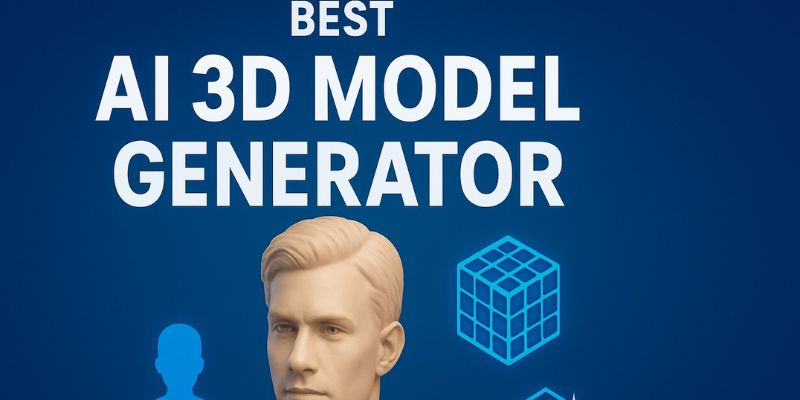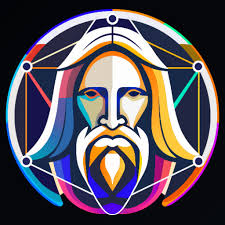The world of 3D modeling is changing faster than ever, and AI 3D model generators are driving that change. Not long ago, building a 3D model meant spending countless hours in complex software such as Blender, Maya, or 3ds Max, and it often required years of practice to master. Today, AI is breaking down those barriers. With just a prompt, a sketch, or even a photo, you can generate detailed 3D designs in minutes instead of weeks.
So, what are AI 3D model generators exactly? In simple terms, they are smart tools powered by artificial intelligence and machine learning that can automatically create 3D assets. Whether you type in a description, upload an image, or draw a rough outline, the AI handles the heavy lifting. The goal is simple: to make 3D modeling faster, easier, and more affordable, whether you are a game developer, architect, product designer, or digital artist.
And the impact is already huge. AI-powered 3D modeling is transforming industries such as gaming, architecture, animation, AR/VR, and product design.
- Gaming—Generate characters, environments, and props.
- Architecture—Create realistic structures and interiors.
- Animation & Film—Speed up the production pipeline.
- AR/VR & Metaverse – Build immersive digital worlds.
- Product Design – Prototype objects with speed and precision.
In this guide, we’ll explore the 10 best AI 3D model generators of 2025 that can help you bring your ideas to life.
10 Best AI 3D Model Generators in 2025
Each tool below is carefully selected for its innovation, ease of use, and real-world applications.
1. Bevelify—AI-Powered Text-to-3D Generator
Bevelify is an AI-based system that creates 3D models based on only a few words. Users simply allow Bevelify to build a 3D model of anything they can describe in natural language and in seconds, have a usable 3D asset created for them. Bevelify is hoping to change how 3D models are made in character creation and create a more accessible item for people to get a high-quality result.
Key Features:
- Text-to-3D generation in seconds.
- High-quality, lightweight 3D assets.
- Multiple export formats for popular engines.
- Cloud storage and collaboration.
Best Use Cases: Perfect for rapid prototyping, game development, and VR/AR projects.
Who Should Use It: Beginners, indie creators, and startups who want quick 3D assets without technical expertise.
Price: Free plan available; Paid plans from $29/month
2. Spline AI – Real-Time 3D Design with AI Assistance
Spline AI integrates the power of AI with real-time 3D design tools to accelerate creativity. Users can design and animate 3D objects in real-time with AI support to help with refining shapes, textures, and interactions between objects. It is excellent for beginners and professionals.
Key Features:
- AI-powered design and animation.
- Real-time collaboration with teams.
- Seamless export to web and mobile.
- Built-in interactivity for 3D previews.
Best Use Cases: Interactive media design, UI/UX development, and web presentations.
Who Should Use It: Designers and creative professionals building interactive 3D experiences.
Price: Free plan available; Paid plans from $12/month
3. Meshcapade – Human 3D Modeling and Avatars
Meshcapade focuses on producing high-fidelity, realistic human 3D models and avatars, using proprietary AI-enabled technology, which captures true-to-life body proportions and motions. It has found success in industries such as gaming, fashion, fitness, and virtual reality applications.
Key Features:
- AI-generated lifelike avatars.
- Full-body modeling with accurate proportions.
- VR/AR integration and scalability.
- Motion data support for animation.
Best Use Cases: VR avatars, fitness tracking applications, and e-commerce virtual try-ons.
Who Should Use It: Game developers, fashion brands, and immersive VR companies.
Price: Paid (custom pricing, depends on usage and project needs)
4. Kaedim 3D – Turns 2D Images into 3D Models
Kaedim 3D is a revolutionary process that can take 2D sketches or concept art and produce fully functional 3D models. This is a game-changer for artists and developers who are looking to go from draft drawings to usable 3D assets in a functional way. It greatly reduces the time it takes to model in the traditional way.
Key Features:
- Converts 2D images into 3D objects.
- Game-engine-ready meshes.
- Fast AI-driven output.
- Team-friendly collaboration.
Best Use Cases: Game concept prototyping and character design.
Who Should Use It: Indie studios, digital artists, and game developers.
Price: Paid (custom pricing, typically for studios and developers)
5. Luma AI – Photorealistic 3D Scenes from Images
Luma AI emphasizes realism by converting single images or video captures into detailed 3D models and environments. They are used overwhelmingly for architecture, film, and AR/VR experiences where precision and realism are paramount.
Key Features:
- Photorealistic 3D rendering.
- AI-powered scene reconstruction.
- Works with smartphone cameras.
- Perfect for cinematic experiences.
Best Use Cases: Architectural visualization, digital twins, and immersive AR/VR.
Who Should Use It: Architects, filmmakers, and designers requiring realism in 3D models.
Price: Free app available, Paid features for pro users (pricing varies)
6. Fal AI
Fal AI is an enterprise-grade platform that offers enterprise-level APIs and models to generate high-fidelity 3D assets. The platform empowers creators to generate realistic, production-ready 3D models from any single image or text prompt, as well as advanced capabilities such as remeshing and multi-view reconstruction. It is built for developers, studios, and everyone who wants a powerful and scalable 3D generation tool.
Key Features:
- Image-to-3D and text-to-3D capabilities using models like Trellis, Hyper3D Rodin, TripoSR, and Hunyuan3D.
- Flexible input: single image, multiple images, or text + image.
- Multiple output formats (e.g., GLB, meshes) and support for high-quality textures and realistic rendering.
- Usage-based API, so you pay per generation rather than a a fixed subscription for many models.
Best Use Cases:
- For developers building tools or games who need production-ready assets quickly.
- For digital artists or product designers wanting photorealistic or stylized 3D models from images.
- For studios working with AR/VR or simulation that require multi-view or high-detail 3D reconstruction.
Who Should Use It:
- Dev teams or studios that need scalable, flexible asset generation.
- Artists and creators who want to skip tedious modeling work and focus more on concept and design.
- Enterprises that require API integration for automated workflows in 3D content creation.
Price: Free to start / Paid per generation (e.g., $0.02 per Trellis image-to-3D generation, up to ~$0.40 for advanced models like Hyper3D Rodin)
7. Masterpiece Studio – Sculpting and Animation with AI Help
Masterpiece Studio utilizes AI to assist in sculpting, rigging, and animation and simplifies the complex process. It also works within VR, allowing creators to sculpt in a 3D environment and then use AI to animate their characters.
Key Features:
- AI-assisted sculpting and rigging.
- VR-based creation tools.
- Integration with top 3D platforms.
- Animation and motion features.
Best Use Cases: Character design, digital sculpting, and animation workflows.
Who Should Use It: Animators, sculptors, and creative professionals in VR/AR.
Price: Free plan available, Paid plans from $19/month
8. Scenario.gg – Game Asset Generation for Developers
Scenario.gg is specifically designed for game developers, allowing them to create unique game assets using AI. It allows you to have control over the style, so you can create assets that match an artistic direction, speeding up the asset creation pipeline.
Key Features:
- AI-generated game assets.
- Artistic style customization.
- Optimized for Unity and Unreal.
- Collaborative development support.
Best Use Cases: Rapid asset creation for indie or AAA games.
Who Should Use It: Game developers, indie studios, and creative teams.
Price: Paid (custom pricing for game studios and developers)
9. Nvidia GET3D – Advanced AI-Generated 3D Objects
Nvidia's GET3D is an advanced AI engine that can produce a variety of 3D meshes from 2D image collections. It generates realistic objects at scale and is easily one of the most robust means for large projects and for enterprise usage.
Key Features:
- AI-generated high-quality meshes.
- Large dataset training.
- Scalable for enterprise solutions.
- Compatibility with gaming and simulation engines.
Best Use Cases: Simulation environments, metaverse assets, and large-scale gaming projects.
Who Should Use It: Researchers, developers, and enterprise-level creators.
Price: Free (open-source research model, requires Nvidia hardware to run)
10. DeepMotion – AI-Powered Motion and 3D Animations
DeepMotion specializes in AI-driven motion capture and animation by converting simple video inputs into realistic 3D animated characters. It is helpful, especially for developers requiring realistic character movements, but without the cost of motion capture studios.
Key Features:
- AI-driven motion capture.
- Animation rigging.
- Realistic physics simulations.
- Easy integration with 3D software.
Best Use Cases: Animating characters for games, movies, and AR/VR content.
Who Should Use It: Animators, filmmakers, and game developers.
Price: Free plan available, Paid plans starting at $9/month
Benefits of Using AI 3D Model Generators
- Saves time and effort – Cuts down modeling from weeks to minutes.
- Accessible for all skill levels – Anyone can create 3D designs without technical knowledge.
- Boosts creativity – AI offers new design possibilities.
- Supports multiple industries – Gaming, film, VR, and architecture all benefit.
Key Features to Look for in AI 3D Model Generators
- Text-to-3D capabilities for quick workflows.
- High-quality rendering for realism.
- Integration with Blender, Unity, and Unreal.
- Ease of use and intuitive UI.
- Scalability with multiple export options.
How to Choose the Right AI 3D Model Generator
- Match the tool to your project goals (games, VR, product design).
- Compare pricing models (free vs. paid plans).
- Evaluate the the learning curve and support.
- Check compatibility with your existing software.
Future of AI in 3D Modeling
The future of AI in 3D modeling is incredibly promising. We’ll see AI tools handling entire creative workflows, from generating models and textures to animating them with minimal human input. As the metaverse, AR/VR, and digital twins expand, AI will play a central role in designing immersive worlds and experiences.
Conclusion
AI 3D model generators are changing how creators design and innovate. Tools like Bevelify make 3D modeling simple for beginners, while advanced platforms like Nvidia GET3D and DeepMotion offer professional-grade solutions. Whether you’re into gaming, film, or product design, there’s an AI tool to suit your needs.
The future of design is faster, more accessible, and more creative thanks to AI.
People are also reading:
- Famous AI Quotes
- Adobe Premiere Pro vs Filmora
- Best AI Tools for Startups
- Best AI Tools for Audio Editing
- Best AI Tools for Travel
- Best AI Product Image Generator
Frequently Asked Questions (FAQs)
1. Are AI 3D model generators free to use?
Some AI 3D model generators offer free versions or trials, while advanced tools typically require a paid subscription. The choice depends on your needs and budget.
2. Which AI tool is best for text-to-3D creation?
Bevelify and Spline AI are among the best for text-to-3D generation because of their ease of use and ability to produce high-quality results quickly.
3. Can AI generate game-ready 3D assets?
Yes. Tools like Kaedim, Scenario.gg, and Nvidia GET3D create optimized, game-ready assets that can be directly imported into engines like Unity or Unreal.
4. How accurate are AI-generated 3D models compared to manual designs?
AI-generated models are increasingly accurate, though they may require minor refinements. For rapid prototyping and concept design, they’re highly effective.
5. What industries benefit most from AI 3D modeling?
Gaming, architecture, animation, AR/VR, and product design industries see the biggest benefits due to faster production times and reduced costs.
















